Revolutionary
War Soldier Buried in Wapello County
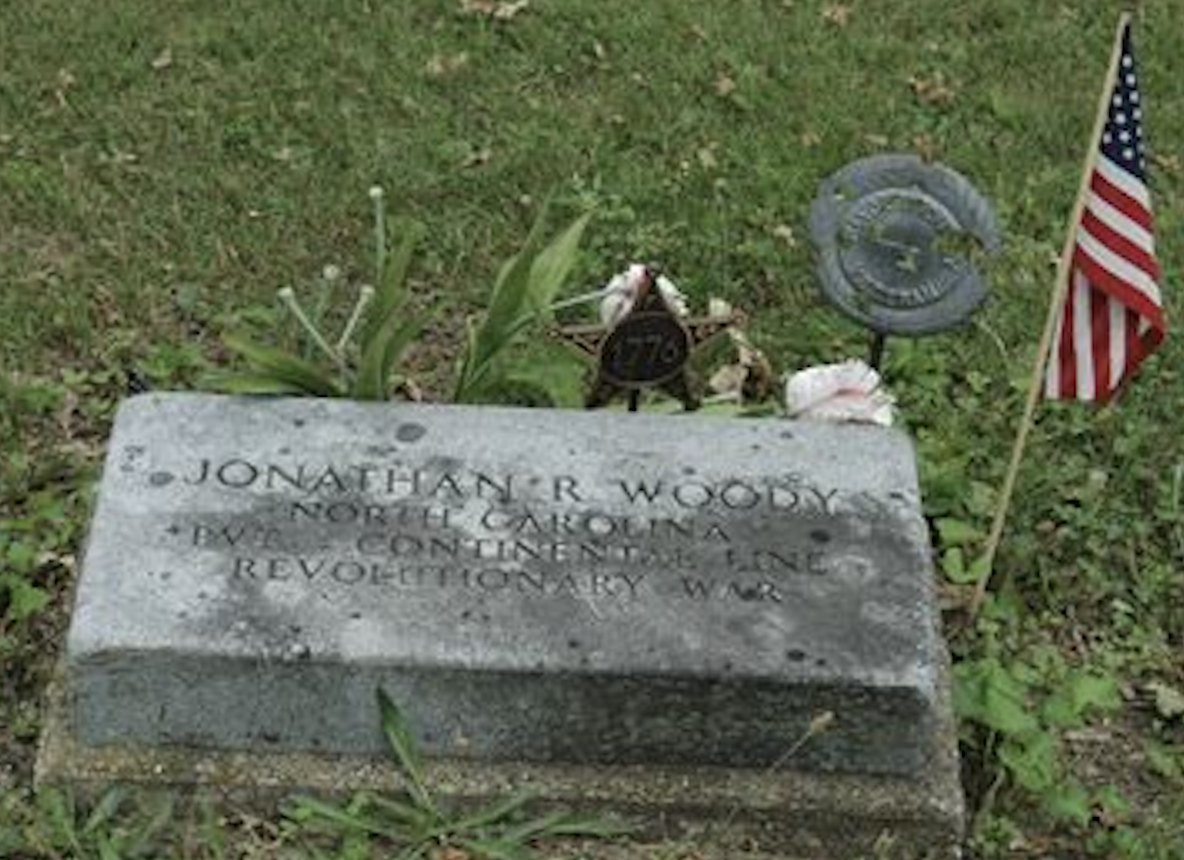
Jonathan Woody was born June 15, 1756, in the
Quaker settlement of Surry County, North
Carolina. He died April 18, 1850, in Wapello
County, Iowa. Burial was in Dahlonega Cemetery
northeast of Ottumwa. On October 4, 1968, the
Elizabeth Ross Chapter and the American Legion
dedicated the first permanent metal marker on
Mr. Woody's grave.
|
Revolutionary
War
Soldier Buried in Davis County
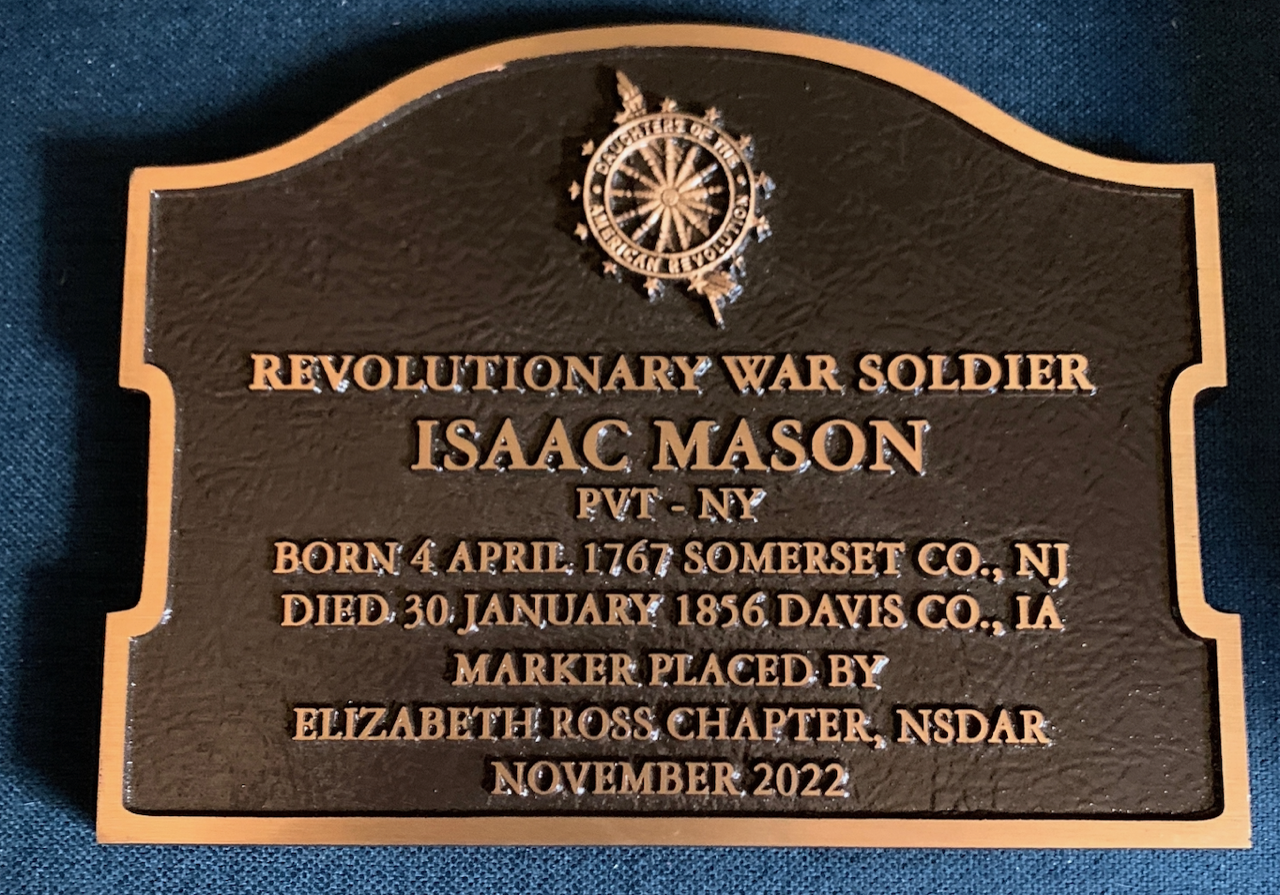
Isaac Mason was born April 4, 1767, in
Somerset County, New Jersey. He died January
30, 1856 in Davis County, Iowa. Burial was in
Drakesville Cemetery, Bloomfield, Iowa. On
November 12, 2022, the Elizabeth Ross Chapter
dedicated a DAR marker on Mr. Mason’s grave. |
Historical
Markers
Observatory Hill 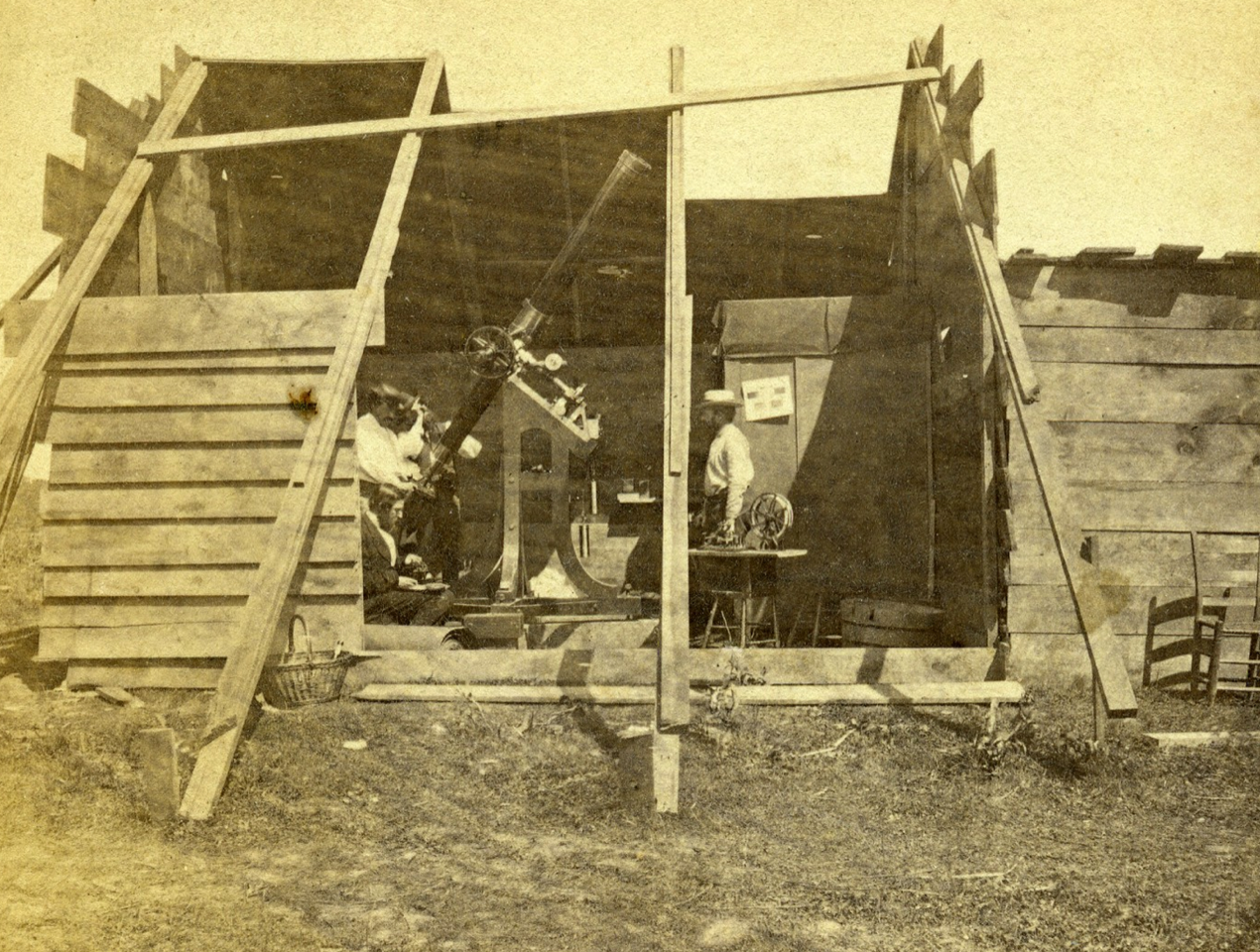
Only once since the occupation of Iowa by
white men has a “total eclipse” been visible
within the borders of Iowa. On August 7, 1869,
this became possible for the first time.
Cities around the state prepared to observe
the total eclipse.
The observation building was erected on a
hilltop in Ottumwa, Wapello County, Iowa,
beyond what is now Chestnut Street in the
vicinity of High Point Chapel on Elm Street.
For years thereafter, the place was known
locally as “Observatory Hill.”
In Ottumwa, the first authentic photograph of
the phenomenon known as “Baily’s Beads” was
taken with the light reflecting it appears as
“strand of a glorious necklace of pearls”.
In 1869 the Elizabeth Ross Chapter erected a
temporary marker on Observatory Hill. |
|
Chief
Wapello's Grave
Chief Wapello was a good friend of the early
settlers, especially General Joseph M. Street,
the first Indian Agent at Agency, Iowa, just
east of Ottumwa in Wapello County. One of the
leaders of the Sac and Fox tribes, Chief
Wapello was not a tall, sinewy brave. In fact,
he was short and stout and always promoting
peace. His good friend, General Street, died
in 1840 and the Chief died two years later.
After the death of his friend, he let it be
known that he wanted to be buried beside him.
Chief Wapello was born in Prairie Du Chien,
Wisconsin, in 1787. He died at the forks of
the Skunk River on March 15, 1842, and
following his wishes, he was brought to the
Indian Agency and buried by the side of
General Street in the garden of the Agency. An
enclosure back of the Chief Wapello sign
houses the graves of the Chief and the
General, side by side. In 1910-1912, the
Elizabeth Ross Chapter added a memorial marker
to Chief Wapello's grave and a directional
marker on Highway 34 pointing to the grave's
location.
|
Washington
Bicentennial Recognition
In 1932, a sycamore tree was
planted in Wildwood Park in Ottumwa, Iowa by
the Elizabeth Ross Chapter. This tree was to
commemorate the bicentennial birthday of
George Washington. The tree is located about
fifteen feet west of the marker.
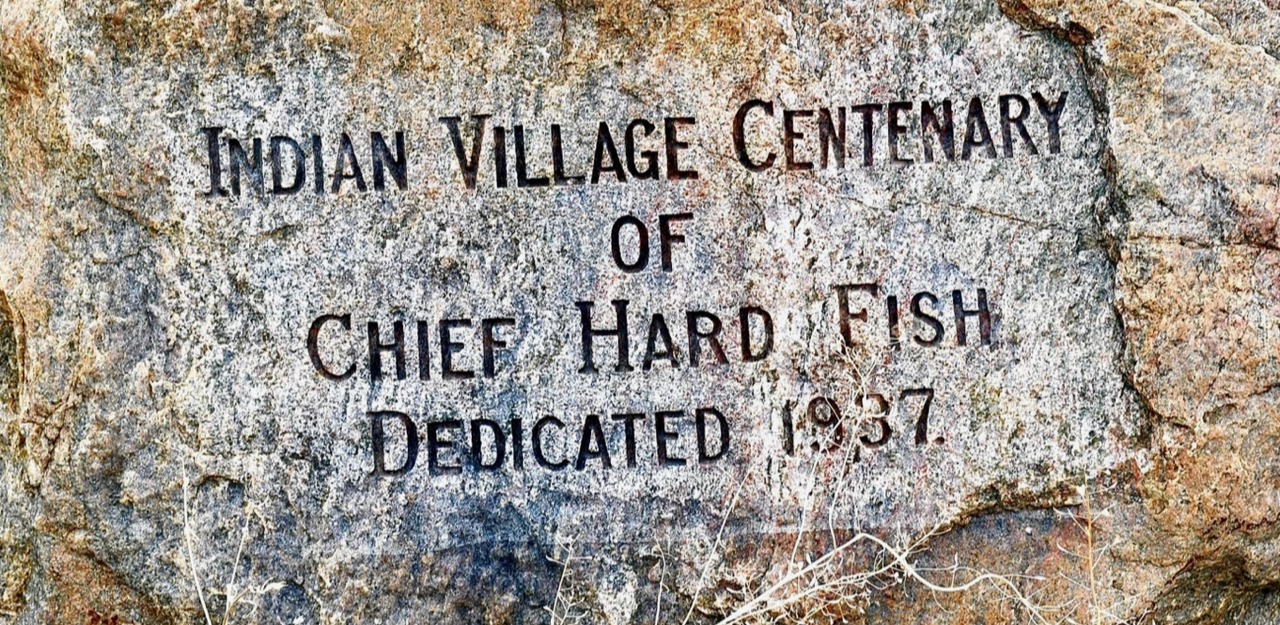
Chief
Hard Fish
An historic marker located in Eddyville Iowa
was placed in 1937 as a dedication to Chief
Hard Fish, also known as Wishecomaque. Chief
Hard Fish followed Black Hawk as the leader
of the Sac and Fox Indians and was in charge
when the Iowa Governor's Council purchased
the Sac and Fox land in Iowa in 1842. Hard
Fish and his 2000 followers moved upstream
to the Red Rocks in Marion County and left
their camp to the whites. The camp was
located near the mouth of the Muchakinock
Creek on the banks of the Des Moines River.
|
|
Dragoon
Trail
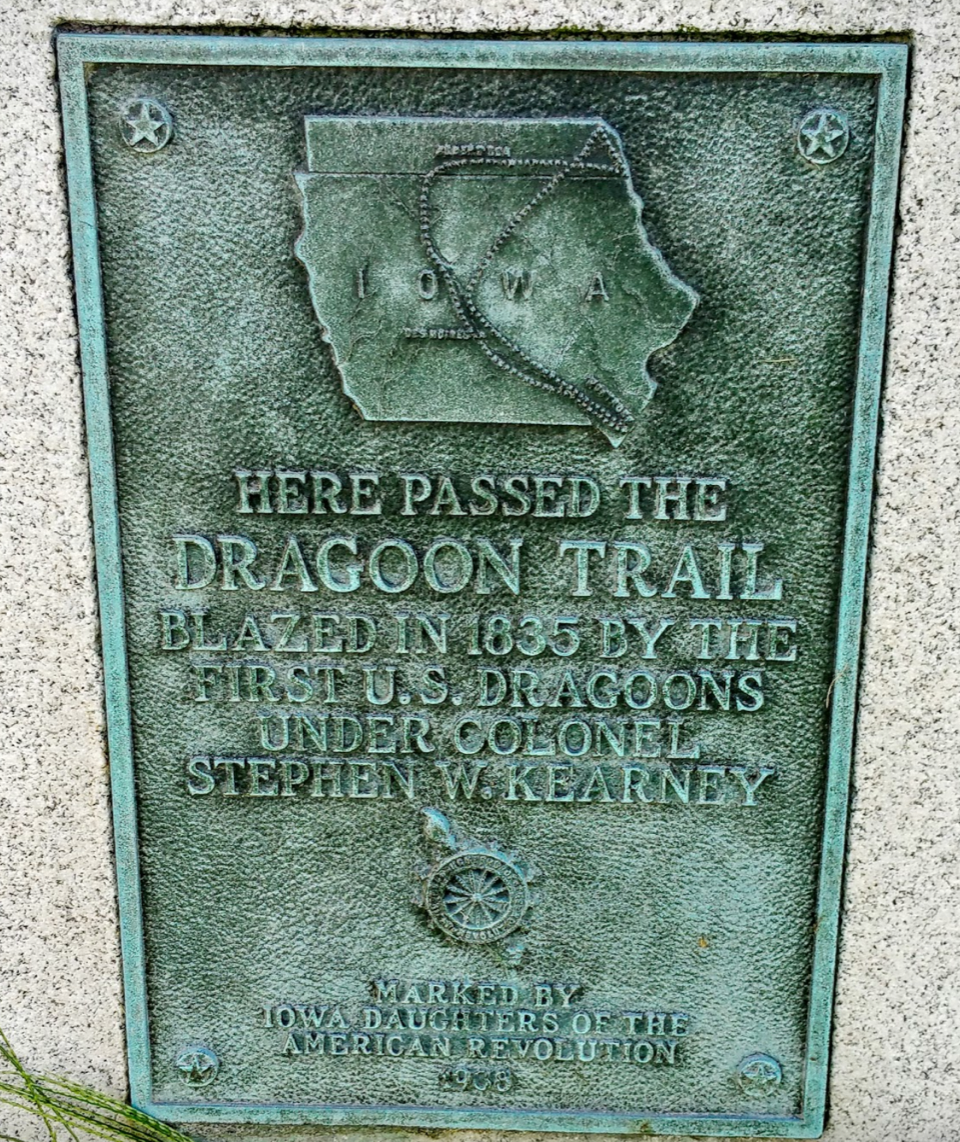 In 1938, the Elizabeth Ross
Chapter placed a large boulder and marker
commemorating the passage of the Dragoons
through this section of Iowa, at the
intersection of Rutledge Road and U.S. Highway
63 North. A bronze plaque on the boulder
reads: “Here passed the Dragoon Trail. Blazed
in 1835 by the first Dragoons under Colonel
Stephan W. Kearney and marked by DAR 1938.”
Also, on the plaque is an outline of our state
with the trail etched across it from Montrose,
Iowa, through Des Moines and up through Albert
Lea, Minnesota. This still serves as a
landmark in our community. In 1938, the Elizabeth Ross
Chapter placed a large boulder and marker
commemorating the passage of the Dragoons
through this section of Iowa, at the
intersection of Rutledge Road and U.S. Highway
63 North. A bronze plaque on the boulder
reads: “Here passed the Dragoon Trail. Blazed
in 1835 by the first Dragoons under Colonel
Stephan W. Kearney and marked by DAR 1938.”
Also, on the plaque is an outline of our state
with the trail etched across it from Montrose,
Iowa, through Des Moines and up through Albert
Lea, Minnesota. This still serves as a
landmark in our community. |
Agency
House
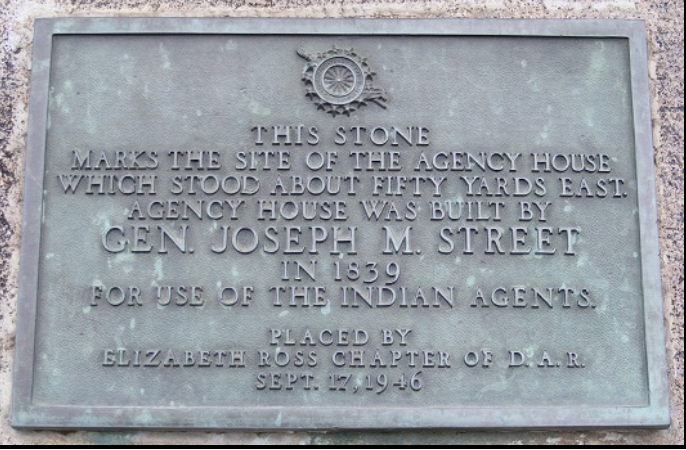 On
September 16, 1946, the Elizabeth Ross Chapter
placed a boulder marker at the site of the Old
Agency House, East of Agency, Iowa, and ¼ mile
south from U. S. 34 East. Agency House was
built by General Joseph M. Street in 1839 for
use of the Indian agents. The large boulder
was marked with a fitting inscription and
placed on the spot where General Street’s
house formerly stood. The dedication was held
on the second day of the centennial
celebration of the founding of the city of
Ottumwa. The marking of this historical spot
also emphasized the 50th birthday
of Elizabeth Ross Chapter On
September 16, 1946, the Elizabeth Ross Chapter
placed a boulder marker at the site of the Old
Agency House, East of Agency, Iowa, and ¼ mile
south from U. S. 34 East. Agency House was
built by General Joseph M. Street in 1839 for
use of the Indian agents. The large boulder
was marked with a fitting inscription and
placed on the spot where General Street’s
house formerly stood. The dedication was held
on the second day of the centennial
celebration of the founding of the city of
Ottumwa. The marking of this historical spot
also emphasized the 50th birthday
of Elizabeth Ross Chapter |
|

